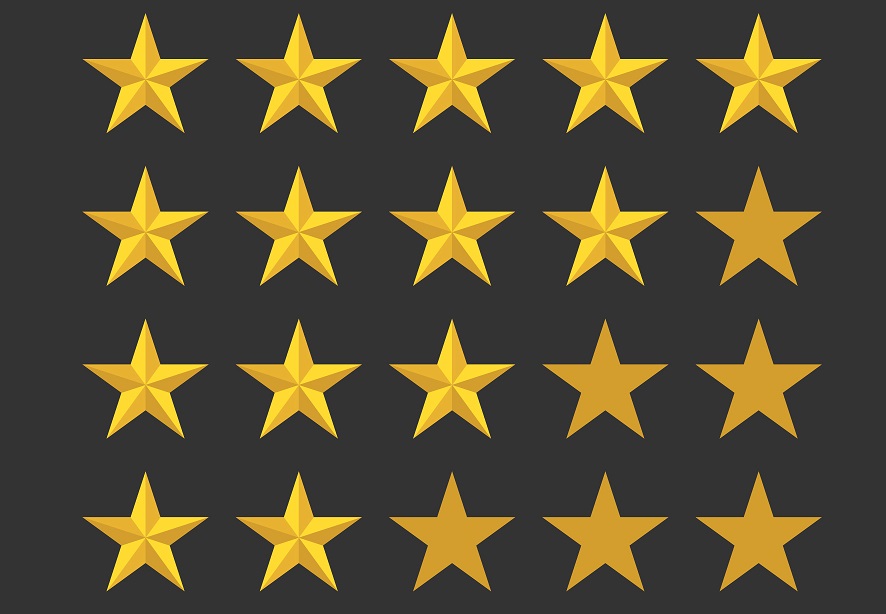Acute-care hospitals see higher star ratings on new CMS methodology

April 28, 2021
Nearly one-third of hospitals scored higher star ratings under CMS’ new methodology that’s meant to create a clearer picture of quality and safety, according to data released Wednesday.
It’s the first time CMS has applied the new methodology, and 45% of hospitals received the same star rating as before. Nearly a quarter, 22.7% of acute-care hospitals, had worse ratings.
CMS’ latest formula equally gives weight to each quality and safety measure and groups hospitals by the number of measures they report. The agency formerly used what’s known as a latent variable model that used several variables to calculate each measure’s weight. Many stakeholders said made it hard for hospitals to target quality improvement.
Overall, more hospitals scored 4 and 5 stars on the scale; 45 fewer hospitals received 1 star compared to the last update using the latent variable methodology. An additional 59 hospitals received a 5-star rating.
Critical-access hospitals saw a more dramatic shift in star ratings. Previously, 94.3% of these hospitals received 3 or more stars. Only 76.3% scored 3 or higher under the new methodology.
The average star rating of critical-access hospitals decreased 3.83 to 3.23. Medium-sized community hospitals, meanwhile increased from an average of 3.10 to 3.29 stars and teaching hospitals average scores increased from 2.83 to 3.16, according to an analysis by SullivanCotter.
Fourteen percent of hospitals under the new methodology received five stars, including Rush University Medical Center and Rush Oak Park Hospital. Both hospitals had 5-stars under the earlier formula, and clinicians and others from the Rush helped shape the new methodology. Dr. Omar Lateef, president and CEO of Rush University Medical Center, said measures ideally should reflect what’s important to patients.
“Optimal use of publicly reported quality measures points patients, healthcare providers, and other stakeholders to organizations that are truly providing exceptional care,” Lateef said. “We applaud CMS for deeply engaging with public feedback and the technical expert panel, as these ratings more accurately reflect hospital quality.”
Jeff Softcheck, principal of performance analytics and advisory services at SullivanCotter, said the new methodology levels the playing field for some hospitals.
“You can still see imbalance in the CMS Star Ratings as hospitals increase in size and complexity,” Softcheck said. “One of the main benefits of the new methodology is that hospital leaders can more easily identify performance outliers, allowing them to target and calibrate reasonable improvement efforts.”
Memorial Hospital in southwest Wyoming was one acute-care provider plans to focus on improving quality after dropping from 4 stars to 2. The for-profit hospital’s patient experience rating stayed steady at 3 stars. Memorial Hospital has a plan in place to get back to 4-stars for the 2023 Medicare Rating Refresh, which will use mostly data from this year, according to reporting from local newspaper the Rocket Miner.
“My goal is to get back to a four-star rating by the end of this year,” said Irene Richardson, CEO of the county-owned hospital. “We believe this is not a reflection of the quality of care we provide our patients. We’re taking an even closer look at improvement opportunities.”
The hospital plans on handling quality and safety issues in real time and will provide staff with more education and training in hopes of improving its rating, according to the newspaper.
Softcheck noted that CMS reduced the number of measures to 48 and reduced measure groups from seven to five by combining the timeliness of care, efficient use of medical imaging and effectiveness of care measures. Hospitals must now report at least three individual measures within three of the five overall groups, and one has to be mortality or safety of care. Specific measures that a hospital might have done well on prior are no longer counted toward the total score.
Beth Godsey, the senior vice president of data science and methodology at Vizient, said the update in how CMS calculates data is an improvement, but there’s still work to be done. She’d like to see hospitals grouped and graded based on the types of services they provide, to create a more apples-to-apples comparison of where hospitals fall.
“When it relates to certain types of services, whether it be the trauma service line, organ transplants, cardiac surgeries, neurosurgery, whether they have high volumes of those specific types of services, [that] could really help differentiate the complexity and might even help patients who are seeking those specific types of services differentiate hospitals in a bit more of a meaningful way,” Godsey said.
